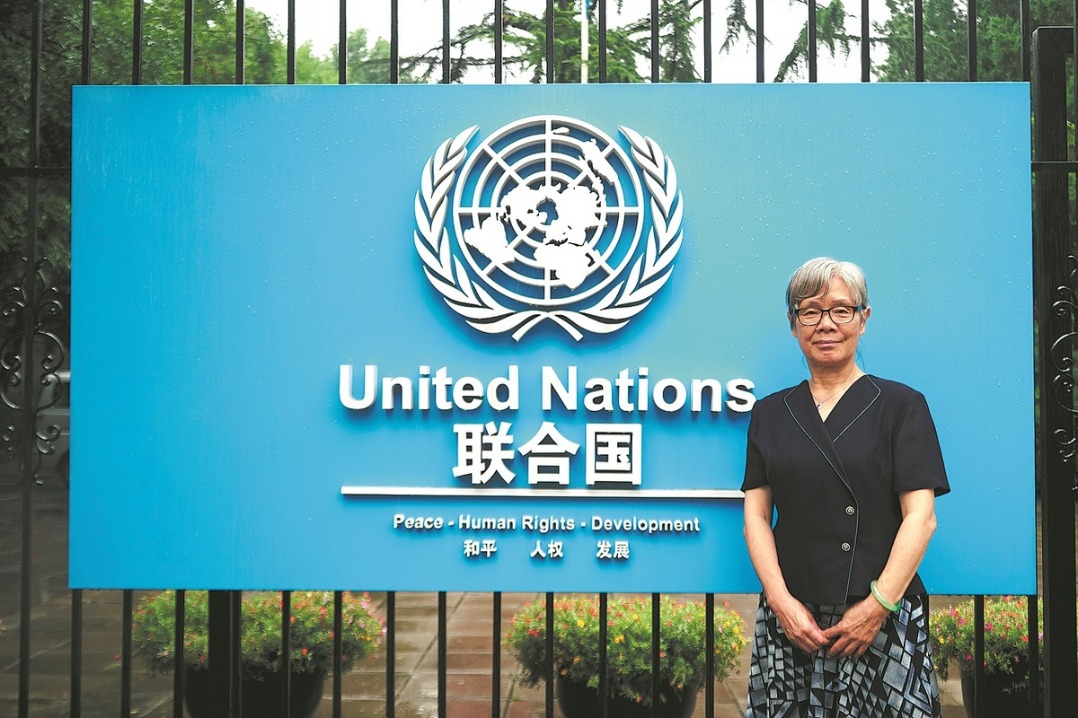Typhoons so far this year stronger, more frequent


This year's typhoon season in China began later than usual and has seen an increased frequency of storms making landfall, meteorological experts said on Wednesday.
Typhoon Francisco, the seventh typhoon of the year, formed in the northwest Pacific on Wednesday morning and is expected to reach the southern East China Sea by Thursday night, according to the National Meteorological Center.
With wind speeds reaching 23 to 25 meters per second, Francisco is expected to approach coastal areas from southern Zhejiang province to northern Fujian province, bringing strong winds and heavy rainfall.
From Saturday to Sunday, heavy rain is forecast for parts of eastern and southern Zhejiang, Fujian, Jiangxi provinces, and Taiwan, with cumulative rainfall expected to range from 20 to 60 millimeters, and some areas potentially seeing 80 to 150 mm.
Between March 15 and July 22, seven typhoons formed in the northwest Pacific and South China Sea, said Jia Xiaolong, deputy head of the National Climate Center. "Three of them made landfall in China, 1.3 more than the typical yearly average," Jia said.
The first typhoon of the season, Typhoon Wutip, formed unusually late on June 11, about two months later than the typical March 25 formation date, while still making an early landfall. Typhoon Danas, the fourth of the season, struck Taiwan and Zhejiang from July 7 to 8, bringing strong winds and intense rainfall across a wide area.
Typhoon Wipha made landfall in Guangdong province on July 20, significantly affecting South China and coastal regions of Zhejiang and Fujian with heavy rain and gusty winds.
Huang Zhuo, deputy head of the National Meteorological Center, said the total number of typhoons forming this year has been consistent with historical averages, but the storms have been stronger than usual.
The average strength of the three typhoons that made landfall reached 34.3 meters per second, compared with the typical 30.2 meters per second in June and July, Huang said.
Danas and Wipha delivered some of the strongest impacts. Danas brought rainfall as high as 740.8 mm in Jiexi county, Guangdong province, and led to mass evacuations and suspension of transportation in Zhejiang. Wipha resulted in nearly 650 mm of rain in Xuwen county, Guangdong.
Jia said August is expected to be quieter, with four to five typhoons likely to form, a slight decrease from the average of 5.6, with two to three typhoons expected to make landfall or impact China's coastal regions. "One storm is expected to affect northern regions, including the Yangtze River," he said.
Meanwhile, Jia noted that China has experienced record-breaking temperatures since the start of the flood season, with heat waves arriving earlier and lasting longer than usual. On July 2, the National Disease Control and Prevention Administration and the China Meteorological Administration issued the country's first national heat-health risk warning.
Xu Dongqun, an expert from the Chinese Center for Disease Control and Prevention, said these alerts play a vital role in helping the country adapt to health impacts caused by climate change.
"The system integrates meteorological warnings with public health interventions, providing the public with high-quality and diversified health services, such as personalized alerts and health protection guidance," Xu said.
She added that the first alert sparked widespread public engagement. According to statistics, the China Central Television news app saw over one million views within an hour of the release of the alert, and the topic trended on social media platform Sina Weibo's hot topics list.
"The alerts boost awareness and knowledge about the health impacts of extreme heat among the public and methods to protect themselves," Xu said.
- China formulates 36 new laws since 2021
- Visitors explore Xinjiang's reclamation history at museum
- China Coast Guard fleet patrol waters off Diaoyu Islands
- Remains of 30 Chinese martyrs in Korean War returned to homeland from ROK
- Autumn harvest in full swing across China
- Belt and Road summit galvanizes grit for shaping shared future




































